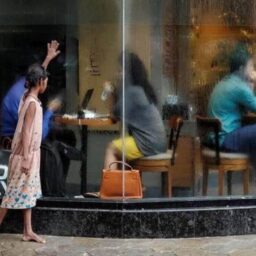
INTRODUCTION
After years of discussions and deliberations on the issue of secondary victimization, it is deeply saddening that the issue of secondary victimization remains to be unaddressed. Blaming the victim for the occurrence of the crime has been normalized in society, so much so that an Indian comedian once mocked this system by stating ‘that if one walks around with his neck, then it’s likely to get cut’.
UNDERSTANDING SECONDARY VICTIMIZATION
Secondary victimization is a process through which different members of the society involved in victim-blaming by depicting insensitive behaviour towards them that ends up traumatizing the victim. Secondary victimization cannot be defined in definitive words for the mere reason that secondary victimization is not based on a pattern or sequence of events. It can occur in various forms, at various places, by various individuals.
This problem is also rooted in institutions that have a greater value attached to the needs of the organization rather than the needs of the victims or members of the organization in general.
Companies often end up in the trap of secondary victimization either to preserve their reputation or due to societal pressures. Moreover, the criminal justice system of the country has turned a blind eye towards the emotional, professional, social, and mental effects of such secondary victimization.
Illustration
A was sexually harassed by B. when A goes to file a complaint at the police station, she is humiliated by the police officers and is questioned about the type of clothes that she was wearing or why was she out of her house late at night, etc. After the beginning of the trial, B’s lawyer questions the character of A and tries to blame her for the crime. After the conviction of B, A resumes her job. She is further questioned by her colleagues about the offence. Moreover, the colleagues often whisper about A’s character and judge every action of hers thereby associating with the occurrence of the crime. Consequentially, A is not offered an incentive equivalent to her colleagues by the employer. She might as well end up being isolated by her colleagues, family, or relatives.
Each of the situations mentioned above constitutes secondary victimization. The consequences of secondary victimization often end up being extremely harsh for the victim.
The trauma of secondary victimization is so severe that it is often termed as a repetitive assault or rape of the victim.
Therefore, it is often observed that the victims fear coming out in public or reporting a crime against them to prevent the distress that might be caused as a result of secondary victimization.
Various studies have shown that social service providers, who are directed to aid the victim often end up re-traumatizing the victim. It has been proved through various instances that secondary victimization can be fatal to the victim’s mental and psychological well-being.
Secondary victimization can occur through:
- Recurrent contact with the perpetrator
- Continuous questioning about the crime
- Inappropriate comments or insensitive language
The Indian society has developed a culture where if a girl wears revealing clothes, laughs, and chats freely with boys or wanders alone late at night then it is presumed that she is ‘inviting’ others to sexually harass her. Moreover, a female is questioned about her previous relationships or her past sexual activity to establish the validity of her complaint. Unfortunately, this issue has not attracted sufficient legislation to protect the victims.
The need to develop effective remedies against such behaviour arises due to the vulnerability of the victim after going through such a traumatic experience. The legal process to obtain justice might as well prove to be a difficult and overwhelming experience for the victim. An increment in such trauma due to taunts or insensitive comments leaves a permanent scar over the victim’s life. Society is reluctant to accept a female who has been sexually harassed but easily excepts a male who has served his sentence after being convicted for a sexual offence.
The rape victims are viewed as ‘damaged’ and are therefore ostracized, isolated, and disowned by their own families. Furthermore, they are prohibited from getting married for it is believed that they have lost their sanctity.
The phraseology ‘remedy worse than the disease’ and ‘stabbing the wound once again’ suits best to such situations.
SECONDARY VICTIMIZATION AND POSH ACT
The term secondary victimization doesn’t find a place in the Sexual Harassment of Women at Workplace (Prevention, Prohibition and Redressal) Act, 2013. Therefore, no particular remedy has been made available under the Act.
However, a victim might seek a judicial remedy under Section 19 and 26 of the Act.
Section 19 mandates that the employer must create a safe working environment at the workplace. This, in its broad sense, can also be applied in cases of secondary victimization as secondary victimization creates a stressful and insecure environment for the victim which contravenes the provisions of this section. Moreover, this section decrees conduction of workshops to sensitize the employers and therefore, a behaviour resonating with secondary victimization implies that either the employer failed at conducting such awareness workshops or the employees were negligent while attending the same, both of which are unacceptable under the act.
Section 26, on the other hand, lays down the penalty resulting from non-compliance with the provisions of the Act. A fine up to Rs. 50,000/- can be imposed on the employer in case if he fails to abide by the provisions of the Act. Moreover, if the offence is repeated, he might be subjected to twice the punishment of the first time (without exceeding the maximum punishment cap).
SUGGESTIONS AND OBSERVATIONS
It can be concluded that secondary victimization has adverse effects on the mental and psychological state of the victim. However, it shall not be missed that secondary victimization also indirectly ensures the safety of the perpetrator at the cost of the vulnerability of the victim. This fetters the moral and ethical values of a nation.
This necessitates the need for urgent action to address the situation legally. Policies and methodologies to reduce such victimization shall be drafted with utmost care and precaution and the violators of such policies shall be subjected to exemplary damages or severe punishments. The greater concern shall be diverted towards sensitizing each member of the society towards such crimes and raising awareness about eh remedies and protection available to the victims. The same can be achieved by addressing these concerns at the grassroots level and sensitizing people belonging to each stratum and socio-economic background in the society.
Author(s) Name: Sujata Porwal (Symbiosis Law School, Pune)
References:
- https://legislative.gov.in/sites/default/files/A2013-14.pdf
- https://www.hindustantimes.com/opinion/address-the-secondary-victimisation-of-sexual-assault-survivors/story-Mb6J3KFRmKhD4fxT8kPf3O.html
- https://eige.europa.eu/thesaurus/terms/1358
- https://mainweb-v.musc.edu/vawprevention/research/victimrape.shtml
















